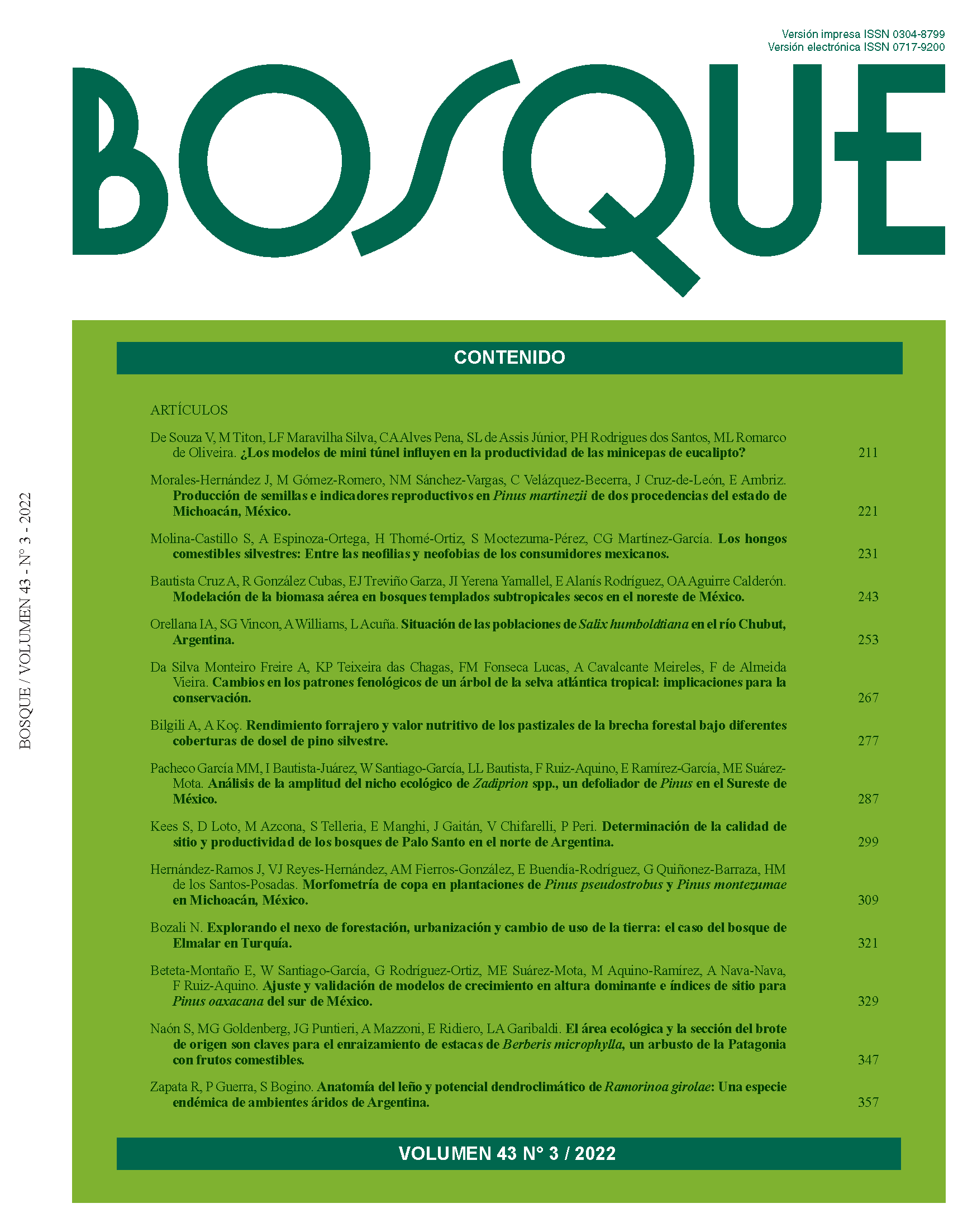El área ecológica y la sección del brote de origen son claves para el enraizamiento de estacas de Berberis microphylla, un arbusto de la Patagonia con frutos comestibles
Contenido principal del artículo
Resumen
El calafate (Berberis microphylla) es un arbusto nativo de amplia distribución en Patagonia que produce frutos comestibles con excelentes propiedades nutracéuticas y antioxidantes. Hasta el momento, la propagación de esta especie, a partir de estacas, ha sido poco exitosa debido a su escaso potencial de enraizamiento, y esta condición restringe su utilización en sistemas productivos. En este estudio se evaluó esa técnica de multiplicación utilizando estacas obtenidas a fines de invierno de secciones basales, medias y distales de brotes semi-leñosos de B. microphylla. Se consideraron tres áreas ecológicas correspondientes a ambientes contrastantes, bosque húmedo, matorral y estepa, y se aplicaron cuatro tratamientos de concentración de ácido indol butírico (AIB), 0 ppm (0 %), 2.000 ppm (0,2 %), 5.000 ppm (0,5 %) y 8.000 ppm (0,8 %). Transcurridos noventa días en cama caliente en invernadero, la formación de raíces adventicias fue superior en las estacas derivadas del material procedente del bosque húmedo, y esta diferencia fue, en promedio, 40 % mayor para la sección basal que para las secciones media y apical. Los tratamientos con AIB no aumentaron el enraizamiento, aunque los valores más altos de peso y longitud de las raíces correspondieron a la mayor concentración de AIB, solo superados por el tratamiento control. Se concluye que la multiplicación de B. microphylla a través de estacas de tallo es posible, y que, tanto el área ecológica de procedencia de la planta madre como la sección del brote del que se obtiene una estaca, inciden de manera importante en el desarrollo de raíces adventicias.

